|
CARNOUSTIE, Scotland -- The Open dates to 1860, a year when just eight competitors took part in the "championship'' played at Prestwick and won by Willie Park. It didn't find its way to Carnoustie until 71 years later. This week, it returns to the Scottish links for just the eighth time when the 147th playing of the game's oldest tournament begins Thursday. And yet, remarkably, in all that time, The Open has visited just 14 venues, 10 of which are in the current rotation of courses. St. Andrews, considered the home of golf, leads the way with 29 championships, and it will host the event again in 2021 when The Open is played for the 150th time. Breaking it down, there have been 95 Opens in Scotland, 50 in England and one in Northern Ireland. We put the 10 venues in order, followed by the four that are still playable but no longer used for The Open. 1. The Old Course, St. Andrews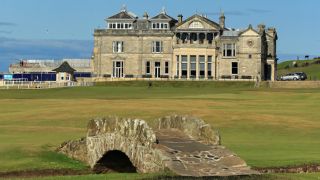 St. Andrews, Scotland (29 Opens; the first in 1873, the last in 2015. Next scheduled: 2021). The Old Course is The Open's jewel, the spiritual home of the game -- with a layout virtually unchanged since Tom Morris Sr. doted over it in the late 19th century. Tiger Woods and Jack Nicklaus each won there twice; Arnold Palmer and Tom Watson never did. The course is so special that the tournament returns to St. Andrews more than any other venue. The R&A Clubhouse, which sits behind the first tee and 18th green, was built in 1854 and became home to golf's governing body (outside of the United States) in 1897. If we had to quibble: The Old Course is becoming dangerously close to being unable to challenge the best in the world. Without strong winds or poor weather, many of the par-4s require nothing more than a wedge or 9-iron approach. In 2015, play was suspended during the third round because of strong winds that had balls oscillating on greens. Most believe the greens were allowed to get too fast, serving as a lone defense of the course. 2. Muirfield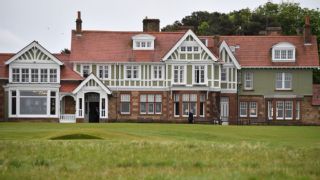 Gullane, Scotland (15 Opens; first in 1892, last in 2013. Next: yet to be scheduled.) Properly known as the Honourable Company of Edinburgh Golfers, Muirfield is one of the oldest clubs in the world and is often cited as the fairest of The Open venues. The list of winners certainly backs up the notion that the course produces top champions: Harry Vardon, Walter Hagen, Gary Player, Jack Nicklaus, Tom Watson, Nick Faldo, Ernie Els and Phil Mickelson. The course opened in 1891 and became a frequent site of The Open, replacing nearby Musselburgh. Not long ago, the club voted to admit its first women members, ensuring that Muirfield will be back in the rotation. If we had to quibble: Muirfield is the hardest of the 14 venues to get on as an outsider, which actually highlights the fact that all of the other venues are accessible in some way to the public. You can play at Muirfield, but it takes some effort and planning and some good fortune. 3. Royal Birkdale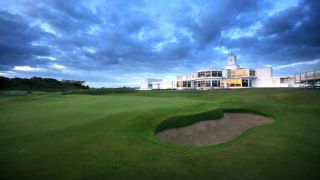 Southport, England (10 Opens, first in 1954; last in 2017. Next: yet to be scheduled.) Birkdale, home to Jordan Spieth's dramatic victory a year ago, is part of an amazing stretch of links golf located along England's northwest coast, relatively close to Royal Lytham & St. Anne's and Royal Liverpool. The course is a relative "newcomer'' to The Open rotation, getting its first chance in 1951, when Peter Thomson won the first of three in a row. Arnold Palmer, Lee Trevino and Mark O'Meara were among other winners. It has been a frequent host to the Women's British Open. If we had to quibble: Does Branden Grace's third-round 62 a year ago, the lowest score ever shot in a major championship, take some of the shine off of an otherwise excellent venue? 4. Carnoustie Golf Club Carnoustie, Scotland (seven Opens; first in 1931, last in 2007. Next scheduled: this week.) Logistical issues kept Carnoustie from hosting the championship from 1975 until 1999, as it certainly had nothing to do with the course. Carnoustie has a well-earned reputation for being one of the toughest links in the world. And it has produced some excellent champions: Ben Hogan in 1953 in his only Open appearance; Gary Player in 1968; and Tom Watson in 1975, winning his first of five Opens in his first attempt. Jean van de Velde infamously blew the 1999 Open, making the Barry Burn part of golf lore. If we had to quibble: It's safe to say Carnoustie is the least visually appealing of the Open venues, far more brawn than beauty. 5. Royal Troon Troon, Scotland (nine Opens; first in 1923, last in 2016. Next: yet to be scheduled.) Site of the epic Henrik Stenson-Phil Mickelson duel in 2016, Troon has an out-and-back configuring similar to that of the Old Course. When nearby Prestwick could no longer manage the demands of a "modern'' Open in the 1920s, Troon became its replacement. The famous "postage stamp'' eighth hole is where Gene Sarazen made an ace at age 71 in 1973. And Mark Calcavecchia's 1989 victory (over Greg Norman and Wayne Grady) at Troon was the first Open to use an aggregate playoff. If we had to quibble: Somewhat like St. Andrews, Troon is susceptible to low scoring without strong wind or poor weather. Mickelson narrowly missed a 62 in the opening round in 2016, and Stenson shot 63 in the final round in setting an Open scoring record. 6. Royal Liverpool Hoylake, England (11 Opens; first in 1897, last in 2014. Not yet scheduled.) The first club in North West England to host an Open, Hoylake, as it is called, is the second-oldest seaside links in England and home to some nice history. It was the venue for the first (British) Amateur Championship in 1895, and two of the three amateurs who won the Open, Harold Hilton and John Ball, were Hoylake members. It also is where another amateur, Bobby Jones, won the second leg of the Grand Slam in 1930. Hoylake went 39 years between Opens; Tiger Woods won in The Open's return to the venue in 2006. If we had to quibble: The R&A changes the routing of the course for The Open so that what is normally the 16th hole becomes the finishing 18th -- and with interior out of bounds. 7. Turnberry (Ailsa Course)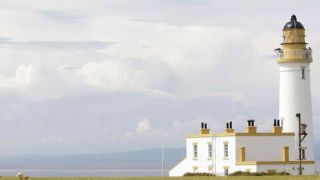 Turnberry, Scotland (four Opens; first in 1977, last in 2009. Not yet scheduled.) This is the most picturesque of the Open venues, and U.S. President Donald Trump's ownership group did an excellent job in renovating several holes along the water near the iconic lighthouse. The last course to join the rota in 1977, Turnberry has yet to disappoint. Tom Watson's "Duel in the Sun'' with Jack Nicklaus in 1977; followed by Greg Norman's first major title in 1986; a memorable finish for Nick Price in 1994; and Watson's remarkable run at becoming the oldest major champion at age 59 in 2009 that ended with a playoff defeat to Stewart Cink. Photos of the Ailsa Craig off the Turnberry coast are some of the most popular in golf. If we had to quibble: Trump's ownership of the course has led to speculation that the R&A is loath to return anytime soon, although a big factor also is the resort's remote location, making it among the least profitable venues. The earliest it could get the championship again is 2022, but Muirfield also will be a strong contender. 8. Royal Lytham & St. Anne's Lytham St. Anne's, England (11 Opens; first in 1926, last in 2012. Not yet scheduled). Before the final round of the 1926 championship, Bobby Jones forgot his competitor's ticket and was denied access to the course by an unknowing attendant. Jones simply paid for his admission, then went on to win the first of his three Opens, thus starting Lytham's Open history. If we had to quibble: Lytham is running out of real estate, not just the course but as part of the surrounding area and infrastructure. With Royal Birkdale and Royal Liverpool nearby, it makes Lytham easier to pass by. 9. Royal St. Georges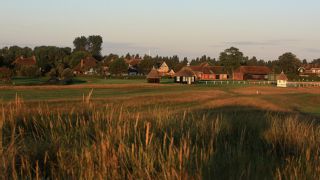 Sandwich, England (14 Opens; first in 1894, last in 2011. Next scheduled: 2020.) This is the most frequently employed venue outside of Scotland, due more in part to its relative proximity to London than the course's attributes. It was the first in England to hold the championship, and it is where author Ian Fleming's "Goldfinger'' was set -- although the course was called "Royal St. Mark's.'' Jack Nicklaus once allegedly said The Open venues got worse the farther south you go -- St. George's is the southernmost in the rotation -- but there is no record of the quote, and the Golden Bear has only sheepishly denied saying it. Located near the Kent coast, on a clear day you can see France from the surrounding area. If we had to quibble: Royal St. George's is in the tiny town of Sandwich and is easily the most quirky of all the venues, with numerous mounds and humps sending perfectly struck shots toward the rough. 10. Royal Portrush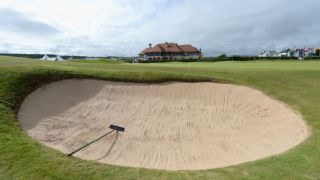 Portrush, Northern Ireland (one Open; 1951. Next scheduled: 2019. Last is certainly not least. Royal Portrush is a stunning venue that is getting another shot next year after its lone Open in 1951. It is the one and only venue outside of England or Scotland (there has never been an Open in Wales) to stage the championship, due more to logistics than anything negative about the course. The town of Portrush is home to 2010 U.S. Open champion Graeme McDowell and 2011 Open champion Darren Clarke. Rory McIlroy is from nearby Holywood. Undoubtedly, their influence helped earn Portrush another chance, as did the reworking of a few holes to make it more championship worthy. If we had to quibble: For all of the course's greatness, the surrounding area is tiny, which will make for some interesting logistics next year. The four venues no longer in use1. Prestwick Golf ClubPrestwick, Scotland (24 Opens; first in 1860, last in 1925). The original home to The Open, Prestwick still rates because of its impressive history, even though it is no longer suited to host the championship. The first 12 Opens were played at Prestwick, and 15 of its 24 were played on a 12-hole layout that was not revamped until the late 1880s. Today, just four of the original holes remain, but the quirky layout is loaded with history. In 1870, Tom Morris Jr. won for the third straight time, having started the tournament with a 3 on what was then a 578-yard opening hole that played as a par-6. 2. Royal Cinque PortsDeal, England (two Opens; 1909 and 1920) Located a few miles from Royal St. George's, Deal, as it is commonly called, would have hosted the championship far more often were it not for world circumstances. It lost potential Opens in 1938 and 1949 when unusually high tides flooded the course. And The Open never returned. An interesting moment in golf history occurred at Deal in 1920, when Walter Hagen defied orders to change in the pro shop -- as required of all professionals at the time. Pros were barred from the clubhouse, but Hagen had his limo driver park at the flagpole, where he would change his shoes each day. Hagen would win The Open four times. Still an excellent test, Cinque Ports is not nearly as equipped as nearby Royal St. George's to accommodate a modern Open. 3. Prince'sSandwich, England. (one Open; 1932). Located adjacent to Royal St. George's, the course made for three venues within a few miles of each other, but it got its one and only Open in 1932, when Gene Sarazen set a scoring record that stood for 18 years. Much of the course was destroyed during World War II as the Royal Air Force used it for bombing target practice. Although the greens were left mostly intact, The Open would never return, doomed by its proximity to Royal St. George's. 4. MusselburghMusselburgh, Scotland. (six Opens; first in 1874, last in 1889) Musselburgh only goes to the end of the list simply because it is the course farthest removed from hosting the championship, last doing so in 1889. The nine-hole course is a loop that is mostly contained within an existing equestrian racetrack, and it played a big part in the early days of the championship, as for a time it was rotated between Musselburgh, St. Andrews and Prestwick. Still a treat to play, the club maintains that golf was first played on the grounds as early as 1672.
|
